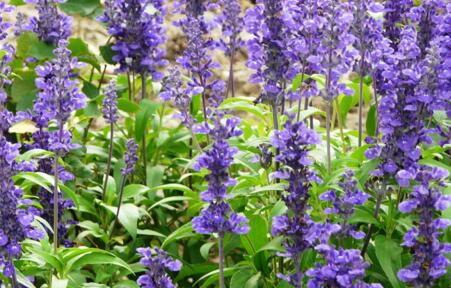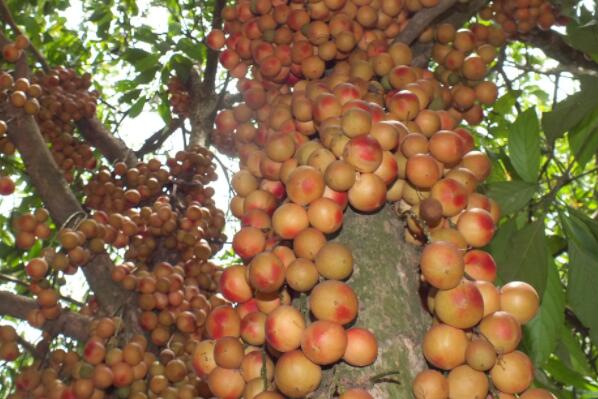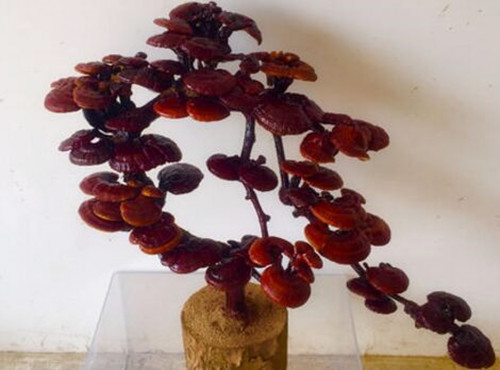When does the blue sage of Labiatae blossom? How long is the florescence? How much is the market price? Suitable
Blue sage, is a Labiatae, is a perennial herb. Potted plants are suitable for the layout of flower beds, flower borders and garden attractions. So, when does blue sage usually blossom? How long is the florescence? How much is the market price? Is it suitable for planting in the north?

When does blue sage usually blossom? How long is the florescence?
Blue sage generally blossoms from spring to summer, flowering about May to October, generally 70-100 days after sowing, long spikes, dense flowers, calyx tubular bell-shaped flowers, pink blue or pink purple flowers, about 12 cm long, mostly used in flower beds, flower borders, from planting, cut flowers, potted flowers, etc., after the inflorescence is removed, it can still branch and continue to bloom.
How much is the market price of blue sage?
The seed price of blue sage is not expensive, but there is a big difference in price. The price of cheap blue sage seed is only 1.8 yuan per gram, while the expensive one will sell for more than 10 yuan per gram, and the seedling price is about 0.6-1.8 yuan per gram. So friends need to choose to buy according to their own judgment and cost-effective ratio.
Third, is blue sage suitable for planting in the north?
Blue sage is suitable for growing in the north. It likes warm, moist and sunny environment, strong cold resistance, fear of heat and dryness. It is suitable to grow in loose, fertile and well-drained sandy soil.
1, sowing and reproduction: blue sage seeds per gram about 920, generally choose 200 or 288 hole plate to sow, the medium is best imported seedling peat soil and domestic seedling peat soil after disinfection, sowing good need in the surface covered with a thin layer of vermiculite, and then covered with film, the appropriate temperature for seed germination is 20 degrees Celsius, germination days are generally 5 days 8 days.
2. Management of budding stage: the sprouting stage of blue sage will continue to take root and the stems will appear and the cotyledons have expanded. At this time, it is necessary to maintain proper humidity and prevent excessive wetness. Fertilizers are generally used with nitrogen, phosphorus and potassium water-soluble fertilizer at 20:10:20. Then, for a longer period of time, the root will be inserted into the hole in the hole plate and several true leaves will appear. At this time, it is necessary to increase the concentration of fertilizer and control the humidity and temperature. Prevent the seedlings from overgrowing at this stage.
3. Temperature conditions: when the true leaves of blue sage reach 2-3 leaves, you can begin to transplant into potted plants. Generally, 12-13 cm potted plants are selected for transplanting. The substrate needs loose and ventilated garden soil, as well as organic fertilizer and compound fertilizer. The temperature will drop to 18 degrees after entering the garden, and may drop to 15 degrees in a month. It should be noted that if the temperature is below 15 degrees, the leaves will turn yellow or fall off, and above 30 degrees, the plant may stop growing.
4. Rational fertilization: blue sage needs to apply 1500 times diluted ammonium sulfate to change the leaf color during the growing period, and the effect is better. Remember that do not apply urea at low temperature. Continuous fertilization can keep the plant roots strong and branches and leaves luxuriant. I like to grow in places with plenty of sunshine. I usually use compound fertilizer containing calcium and magnesium once a month, and proper shading is needed in hot summer.
5. Pest control: common pests of sage include whitefly, aphids, common diseases such as downy mildew, leaf spot, etc., which need to be actively controlled. Usually, carbendazim or chlorothalonil is sprayed once every 7 to 10 days, and 2000 times to kill or 1000 times dichlorvos to control insects every 10 days.
Time: 2019-03-21 Click:
- Prev

How much is the tropical plant wood milk tree seedling price? Can you grow in the north? How do you plant it?
Wood milk fruit, also known as white skin, mountain Luo Portuguese, wild yellow bark tree, soya bean, wood litchi, Dalian fruit, yellow fruit tree, tree grape is one of the representative species of tropical rain forest plants. How much is the sapling? Can you grow in the north? How do you plant it? Learned from Jiangsu Suqian Seedling Base
- Next

What is the price of Ganoderma lucidum bonsai? How do you raise it? What's the effect?
With its unique classic artistic shape and profound artistic connotation, Ganoderma lucidum bonsai has become the first choice for decorating high-end rooms, offices, guesthouses and hotels, and it is also a fashion item for gift and collection. So, what's the price of Ganoderma lucidum bonsai? How do you raise it? What's the effect? What is the price of Ganoderma lucidum bonsai
Related
- Fuxing push coffee new agricultural production and marketing class: lack of small-scale processing plants
- Jujube rice field leisure farm deep ploughing Yilan for five years to create a space for organic food and play
- Nongyu Farm-A trial of organic papaya for brave women with advanced technology
- Four points for attention in the prevention and control of diseases and insect pests of edible fungi
- How to add nutrient solution to Edible Fungi
- Is there any good way to control edible fungus mites?
- Open Inoculation Technology of Edible Fungi
- Is there any clever way to use fertilizer for edible fungus in winter?
- What agents are used to kill the pathogens of edible fungi in the mushroom shed?
- Rapid drying of Edible Fungi

